I was a speaker at this year’s FOSS Backstage conference, which was held 4-5 March in Berlin, Germany. FOSS Backstage is gathering dedicated to the “non-code” aspects of open source, and I was surprised I had not heard of it before this year. This was the sixth edition of the event, and it was held in a new location due to growing attendance.
TL;DR; I really, really enjoyed this conference, to the point where it is in contention to be my favorite one of the year. The attendees were knowledgeable and friendly, the conference was well run, and it was not so big that I felt I was missing out due to there being too many tracks. I hope I am able to attend again next year.
This was my first time in Berlin, and although I have been to Germany on numerous other trips, for some reason I have never made it to this historic city. It does have a reputation for being a center for hacker culture in Europe, hosting the annual Chaos Communication Congress, and several of my friends who were at FOSS Backstage told me they were in Berlin quite often.
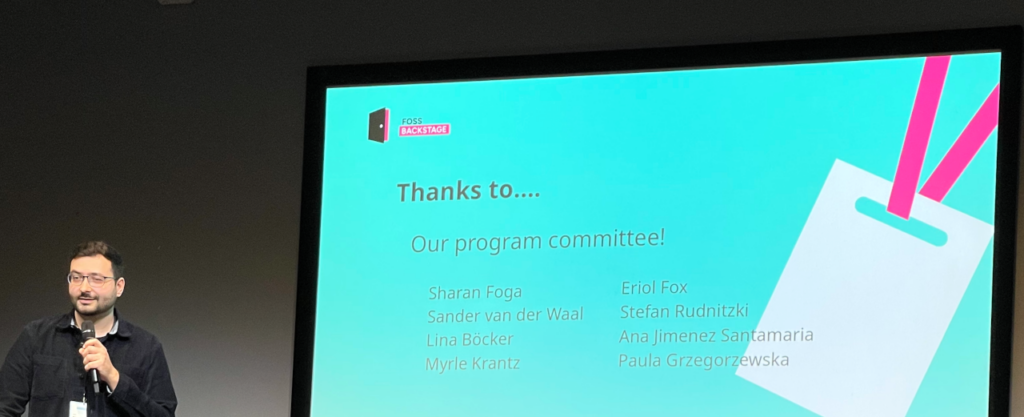
The event was held at a co-working space and we had access to a lobby, a large auditorium, and then downstairs there were two smaller rooms: Wintergarten and a “workshop” room that was used mainly for remote speakers. Each day started off with a keynote in the auditorium followed by breakout sessions of two or three tracks across the three available rooms.
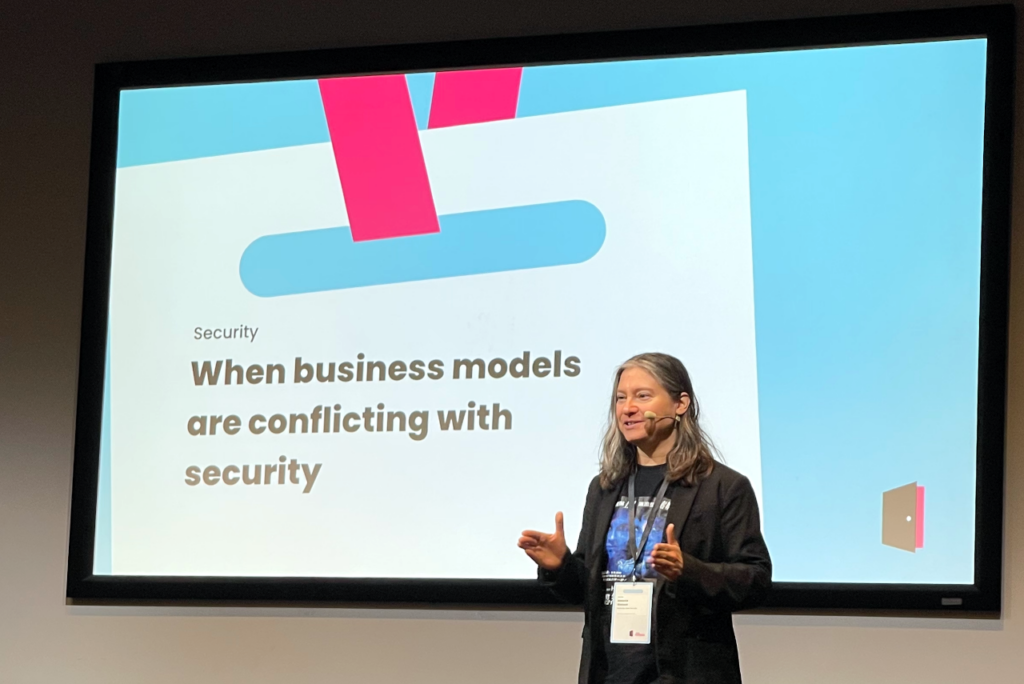
Monday’s keynote (video) was by Melanie Rieback, who is the CEO and Co-founder of a computer security company called Radically Open Security, a not-for-profit security consulting firm. Her company donates 90% of net profits to charity, and they openly share the tools and techniques they use so that their clients can learn to audit their security on their own.
As someone who spends way too much time focused on open source business models, it was encouraging to see a company like Radically Open Security succeed and thrive. But I wasn’t sure I bought in to the premise that all open source companies should be like hers. Consulting firms have a particular business model that is similar to those used by accounting firms, management firms or other service firms such as plumbers or HVAC repair. Software companies have a much different model. For example, I am writing this using WordPress. I didn’t have to pay someone to show me how to use it. If WordPress wants to continue to produce software they need to make money in a different fashion, such as in their case with hosting services and running a marketplace. Those products require capital to create, and since that often can’t be bootstrapped, this means they have investors, investors who will one day expect a return.
Now it is easy to find examples of where investors, specifically venture capitalists, did bad things, but we can’t rule out the model entirely. If you use a Linux desktop, most likely you are using software that companies like Red Hat and Canonical helped to create. Both of those companies are for-profit and have (or in the case of Red Hat, had) investors. The Linux desktop would simply not exist in its current form without them.
The keynote did, however, make me think, which is one of the main reasons I come to conferences.
[Note: I used WordPress as an example because it was handy, and we can discuss the current concerns about selling data for GenAI use another time (grin)]
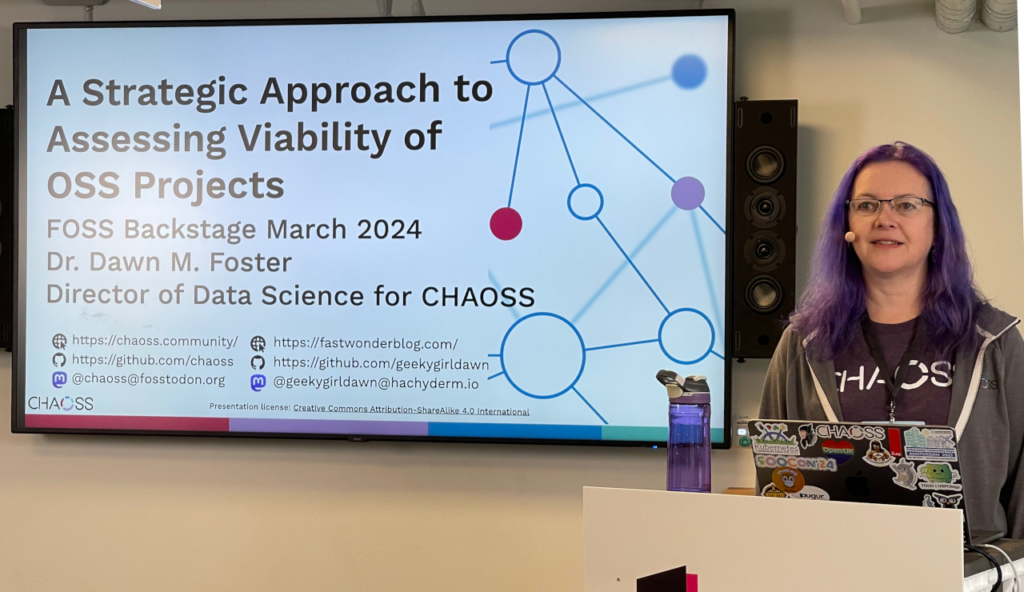
After the keynote the breakout sessions started, and I headed downstairs to hear Dawn Foster talk about understanding the viability of open source projects (video). Dr. Foster is the Director of Data Science for CHAOSS, a Linux Foundation project for Community Health Analytics in Open Source Software.
Open source viability isn’t something a lot of people think about. Many of us just kind of assume that a piece of open source software will just always be there and always be kept up to date and secure. This can be a dangerous assumption, as illustrated by a famous xkcd comic that I saw no less than three times during the two day conference.
In my $JOB we often use data analytics to examine the health of a project. In addition to metrics such as number of releases, bugs and pull requests, we also look at something called the Pony Factor and the Elephant Factor.
I’ve been using the term Pony Factor for two years now and while I can trace its origin I’m not sure how it got its name. To calculate it, simply rank all the contributors to an open source project by the number of contributions (PRs, lines of code, whatever you think is best) and then start counting from the largest to smallest until you get to 50% of all contributions (usually over a period of time). For example, if for a given month you have 20 contributions and the largest contributor was responsible for 6 and the second largest for 5 you would have a Pony Factor of 2, since the sum of 6 and 5 is 11 which is more than 50% of 20. It is similar to the Bus Factor, which is a little more grisly in that it counts the number of contributors who could get hit by a bus before the project becomes non-viable. People leave open source projects for a number of reasons (and I am thankful that it is rarely of the “hit by bus” type) and if you depend on that project you have a vested interest in its health.
The Elephant Factor is similar, except you count the number of organizations that contribute to a project. In the example above, if the two contributors both worked for the same company, then the project’s Elephant Factor would be 1 (the number of organizations responsible for at least 50% of the project’s contributions). While we often assume that open source software is a pure meritocracy based on the community that creates it, a low Elephant Factor means that the project is controlled by a small number of parties. This isn’t intrinsically a bad thing, but it could result in the interests of that organization(s) outweigh the interests of the project as a whole.
This was just part of what Dawn covered, as there are other metrics to consider, and she didn’t go into detail about what you can do when open source projects that are important to you have low Pony/Elephant factors, but I found the presentation very interesting.
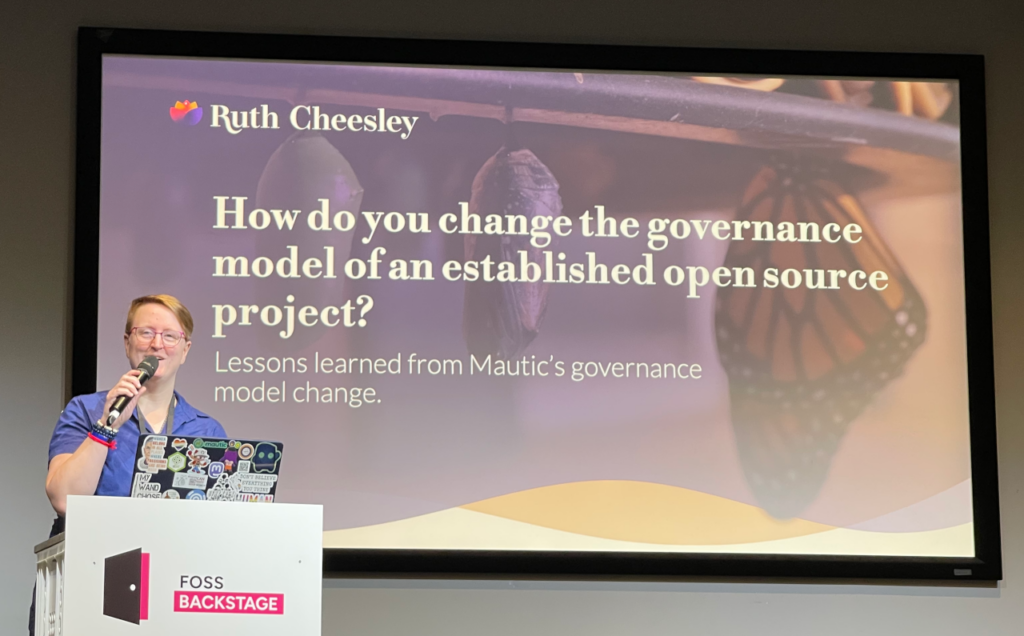
As a nice segue from Dawn’s talk, the next presentation I attended was on how to change the governance model of an existing open source project (video), given by Ruth Cheesley. Ruth is the project lead for Mautic, and they faced an issue when their project, which had an Elephant Factor of 1, found out that the company behind it was no longer going to support development.
Now I want to admit upfront that I will get some of the details of this story wrong, but it is my understanding that Mautic, which does marketing automation, was originally sponsored by Acquia, the company behind the Drupal content management system and other projects. When Acquia decided to step back from the project, those involved had to either pivot to a different governance model or it would die.
There is the myth about open source that simply releasing code under an OSI-approved license means that hundreds of qualified people will give up their nights and weekends to work on it. Creating a sustainable open source community takes a lot of effort, and one of the main tools for building that community is the governance model. No one wants to be a part of a community where they feel their contributions aren’t appreciated and their opinions are not heard, and fewer still want to work in an environment that can be overly aggressive or even hostile. Ruth talked about the path that her project took and how it directly impacted the success of Mautic.
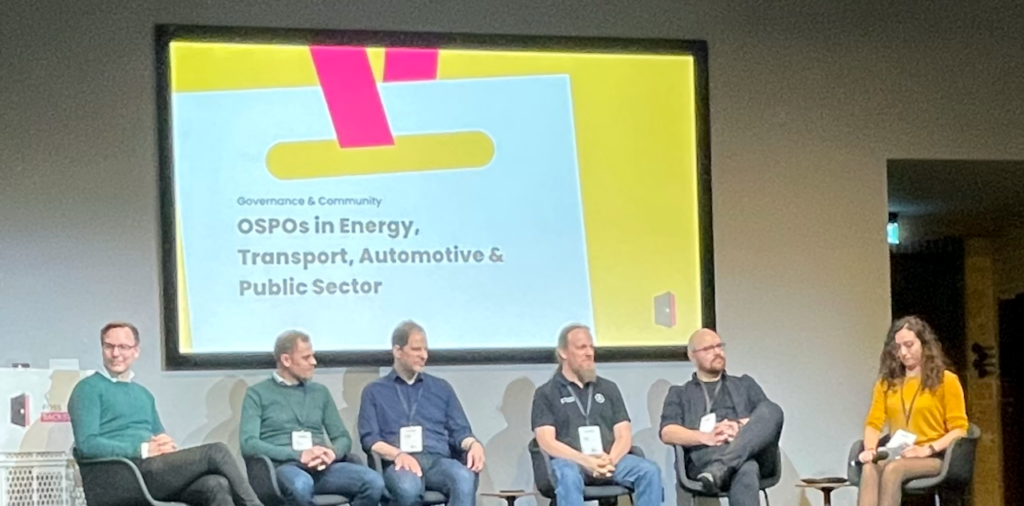
The next session I attended was a panel discussion on open source being used in the transportation, energy, automotive and public sector realms (video). I’m not a big fan of panel discussions, and I was also surprised to see that all the panelists were men (making this a “manel”). FOSS Backstage did a really good job of promoting diversity in other aspects of the conference (and the moderator was female, but I don’t think that avoids the “manel” definition). It was cool to add another data point that “open source is everywhere” and it was interesting to see where each of the panelists were in there “open source journey”. A couple of them seem to have a good understanding of what it gets them but some others were obviously in the “what the heck have we gotten ourselves in to” phase. I did get introduced to Wolfgang Gehring for the first time. Wolfgang works for Mercedes, and I’m an unabashed Mercedes fan. I’ve owned at least one car from most of the humanly affordable brands in my lifetime, and six of them have been Mercedes (I’ve also owned four Ford trucks). While Wolfgang obviously knows his stuff when it comes to open source, I don’t think he can score me F1 tickets. (sniff)
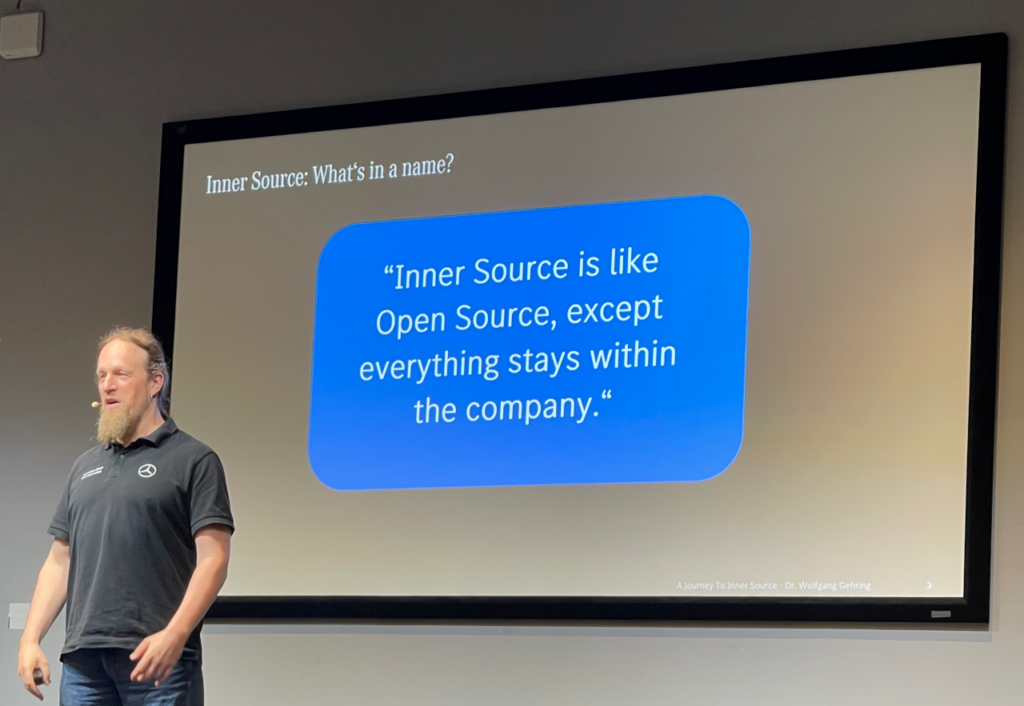
After the lunch break I also revisited Wolfgang and his presentation on Inner Source (video). Most people understand that open source is code that you can see, modify and share. Most open source licenses are based on copyright law, so they don’t apply until you actually “share” the code with a third party. What happens if you want to use open source solely within an organization? In the case of large organizations you might have a number of disparate groups all working on similar projects, and there can be advantages to organizing them. Not only can they share code, they can also share experiences and build a community, albeit an internal one, to maximize the value of the open source solutions they use.
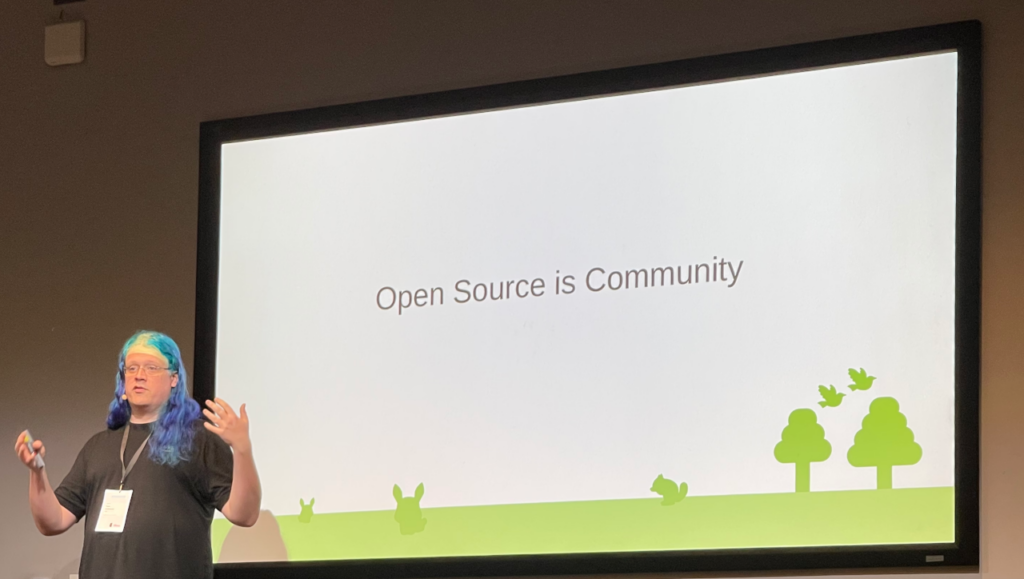
The next three sessions I attended represented kind of a “mini” AWS track. The first one featured Spot Callaway. Spot is something of a savant when it comes to thinking up fun ways to get people involved in open source communities. I’ve known Spot for over two decades and I’ve worked on his team for the last two years, and it is amazing to watch his mind at work. His talk charted a history of his involvement in coming up with cool and weird ways to engage with people in open source (video), and I was around for some of his efforts so I can attest to its effectiveness (and that it was, indeed, fun).
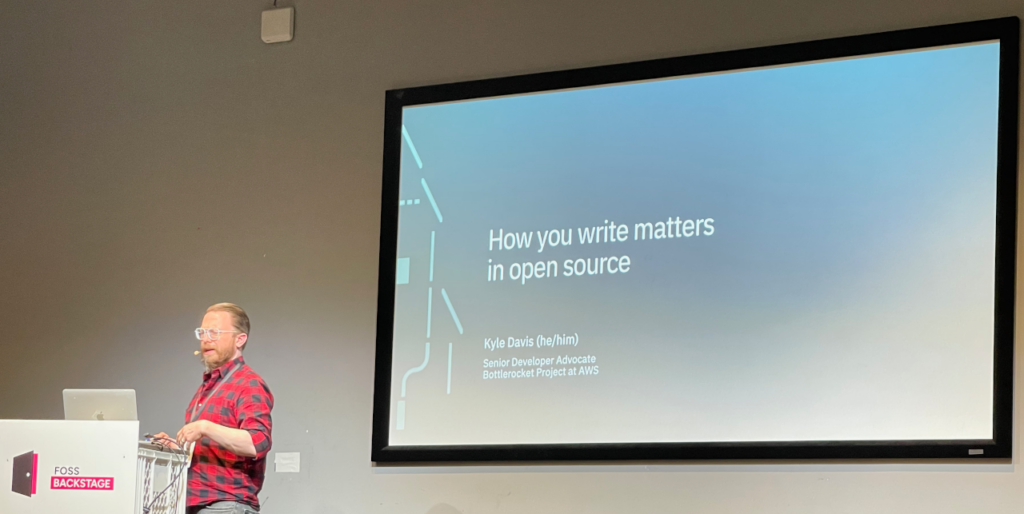
The second session was by Kyle Davis. I had only met him once before seeing him again in Berlin, and this was the first time I’d seen him speak. His topic was on the importance of how you write when it comes open source projects (video). Now, AWS is very much a document-driven culture, and my own writing style has changed in the two years I’ve been there (goodbye passive voice). Kyle’s presentation talked about considerations you should make when communicating to an open source community. Realizing that your information may be read by people from different cultures and where, say, English isn’t a first language can go a long way toward making your project feel more inclusive.
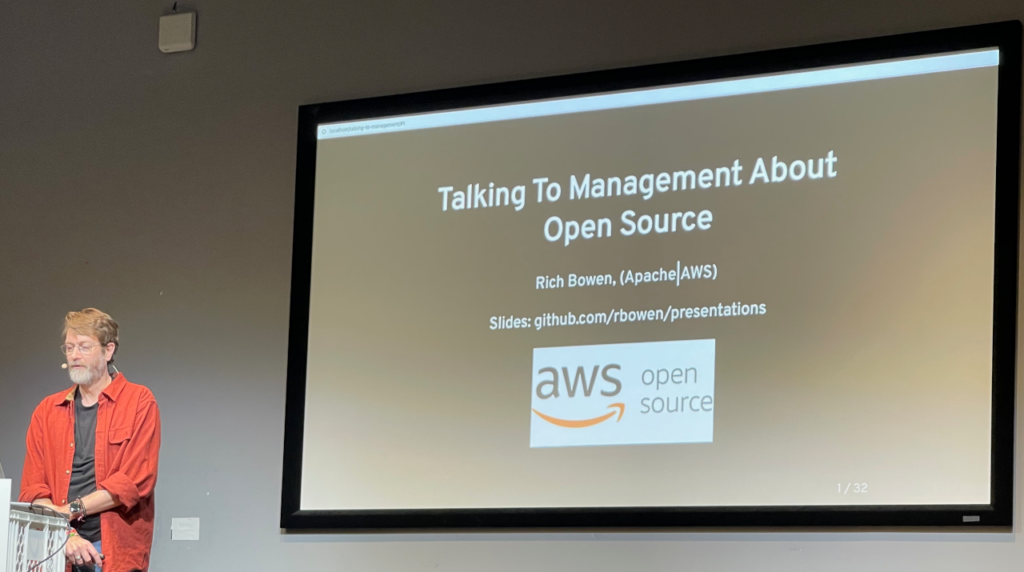
Rich Bowen presented the third session, and he discussed how to talk to management about open source (video). My favorite part of this talk is when he posted a disclaimer that while many managers don’t understand open source, his does (our boss, David Nalley, is currently the President of the Apache Software Foundation).
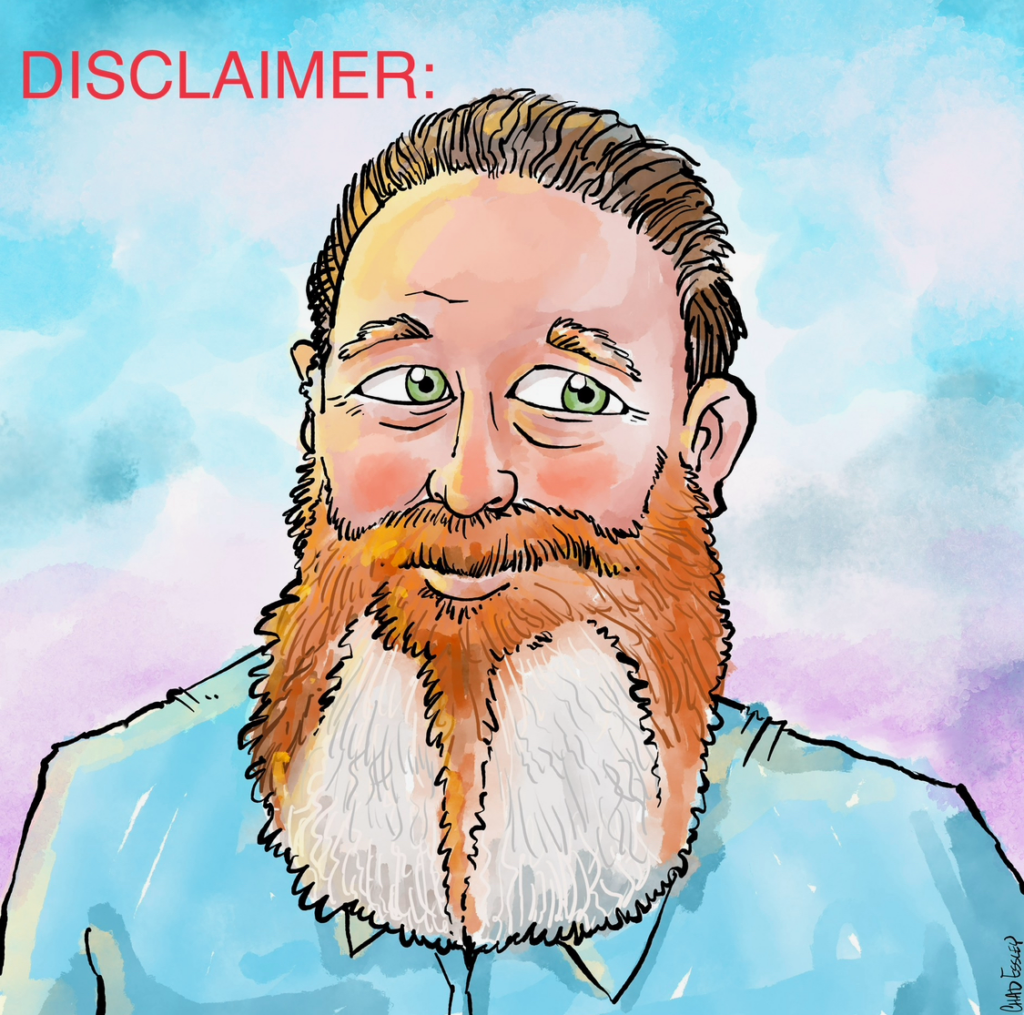
I made up this graphic which I will use every time I need a disclaimer in the future.
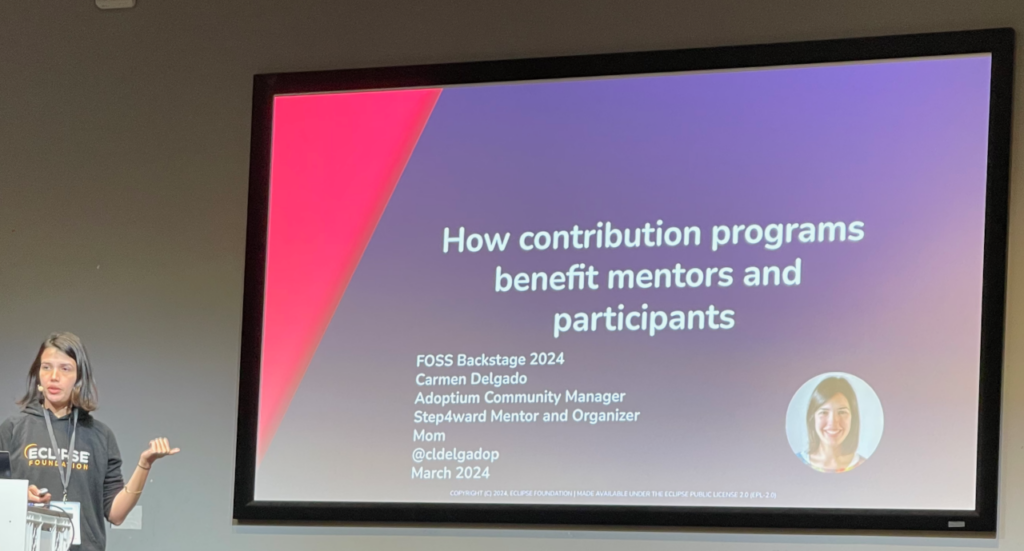
The last session presenter was Carmen Delgado who talked about getting new contributors involved in open source (video). She examined three such programs: Outreachy, Google Summer of Code, and CANOSP and compared and contrasted these three different “flavors” of programs to encourage open source involvement.
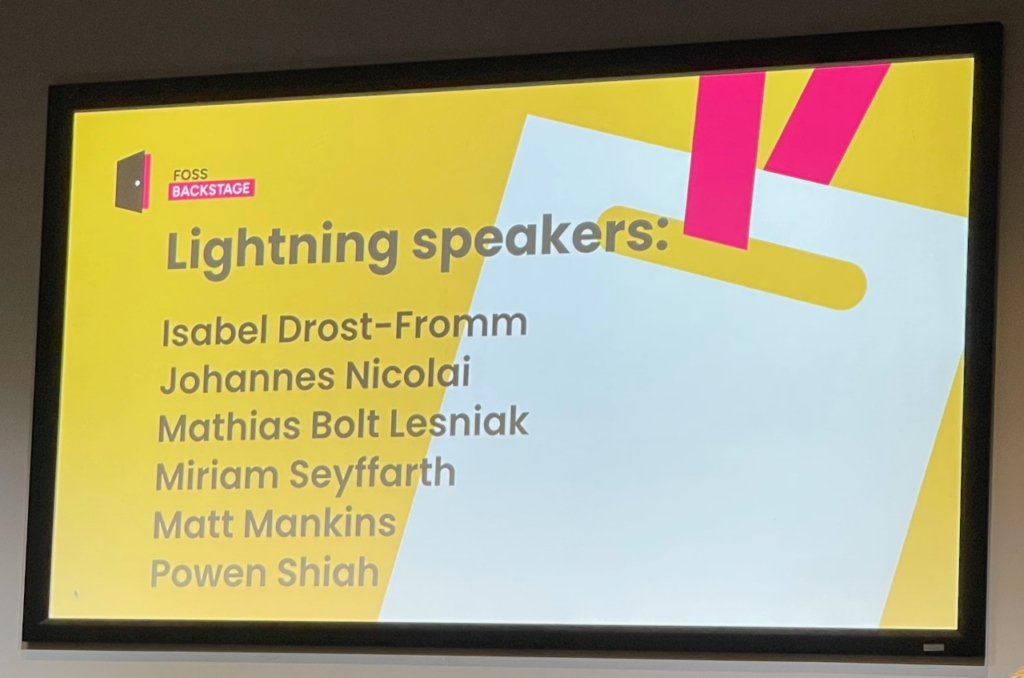
Monday’s presentations ended with a set of “lightning” talks. I’ve always wanted to do one of these – a short talk of no more than five minutes in length (there was a timer) but my friends point out that I can’t introduce myself in five minutes much less give a whole, useful talk.
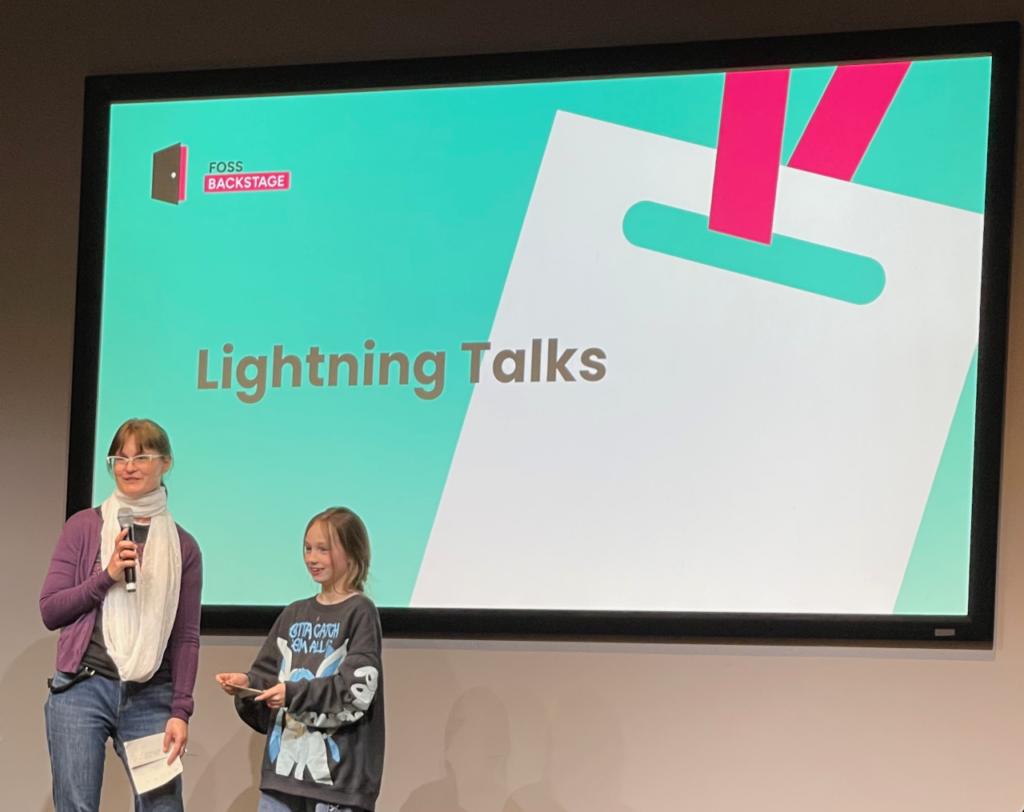
Two talks stood out for me. In the first one the speaker brought her young daughter (in a Pokémon top, ‘natch) and it really made me glad to see people getting into open source at a young age.
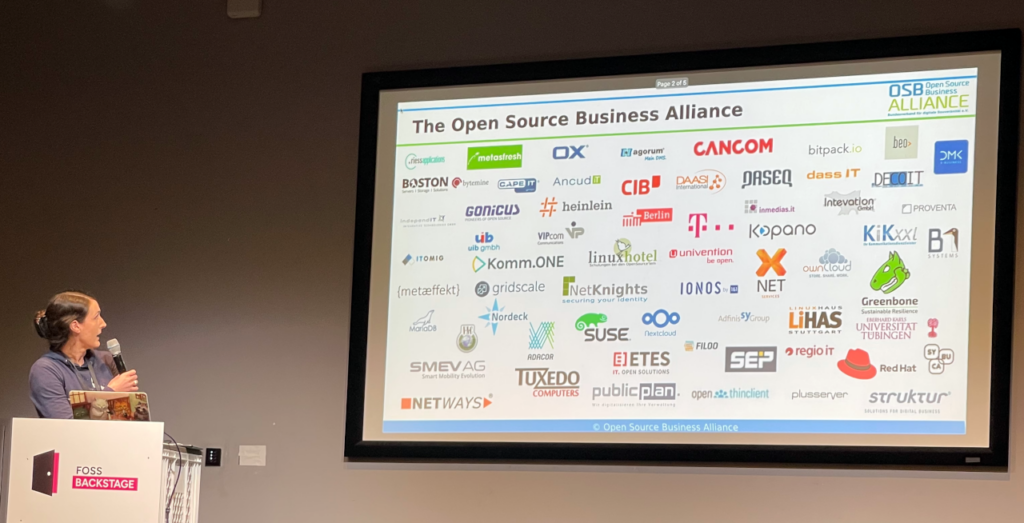
I also liked Miriam Seyffarth’s presentation on the Open Source Business Alliance. I was happy to see both MariaDB and the fine folks at Netways are involved.
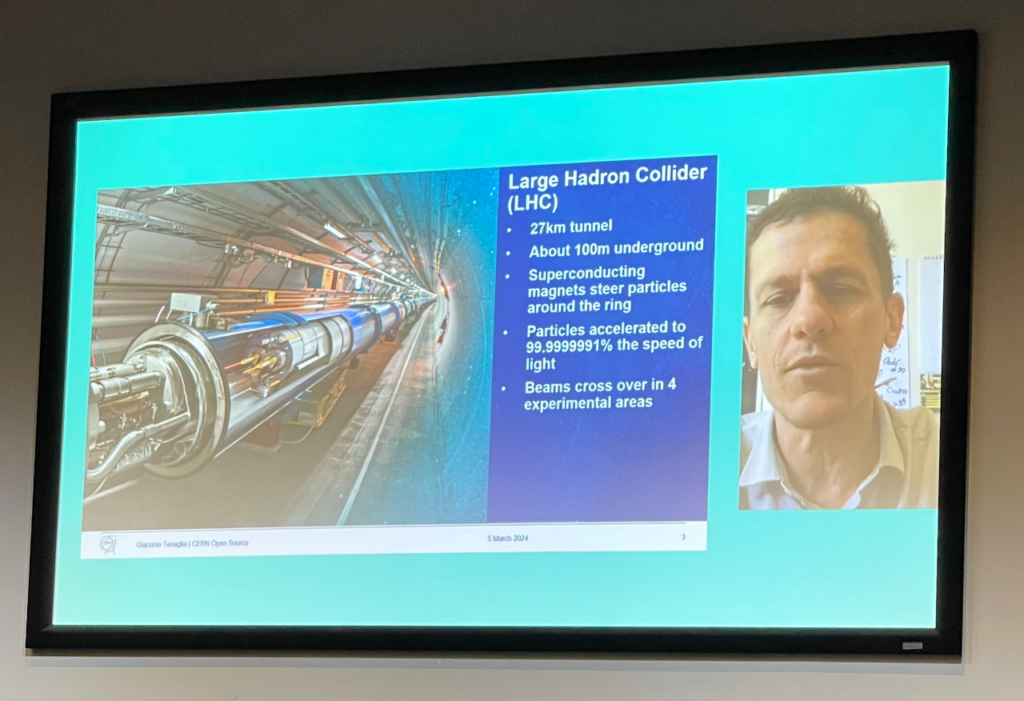
Tuesday started with a remote keynote (video) given by Giacomo Tenaglia from CERN. As a physics nerd I’ve always wanted to visit CERN. I know a few people who work there but I have not been able to schedule a trip. I was surprised to learn that the CERN Open Source Programs Office (OSPO) is less than a year old. Considering the sheer amount of open source software used by academia and research I would have expected it to be much older.
The next talk was definitely the worst of the bunch (video), but I had to attend since I was giving it (grin). As this blog can attest, I’ve been working in open source for a long time, and I’ve spent way too much of it thinking about open source business models. There are a number of them, but my talk comes to the conclusion that the best way to create a vibrant open source business is to offer a managed (hosted) version of the software you create. I’ve found that when it comes to open source, people are willing to pay for three things: simplicity, security and stability. If you can offer a service that makes open source easier to use, more secure and/or more stable, you can create a business that can scale.
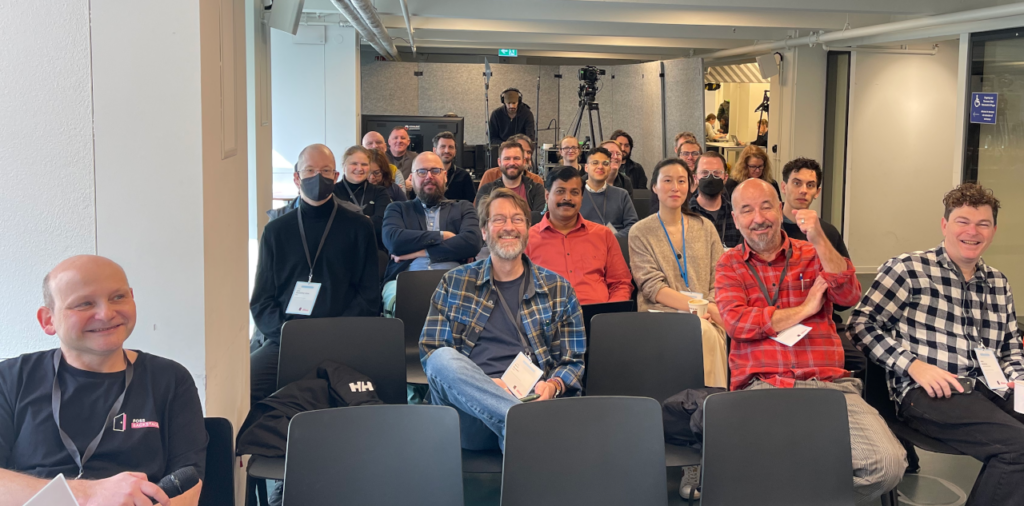
I took a picture just before I started and I was humbled that by the time I was finished the room was packed. Attention is in great demand these days I and really appreciated folks giving me theirs.
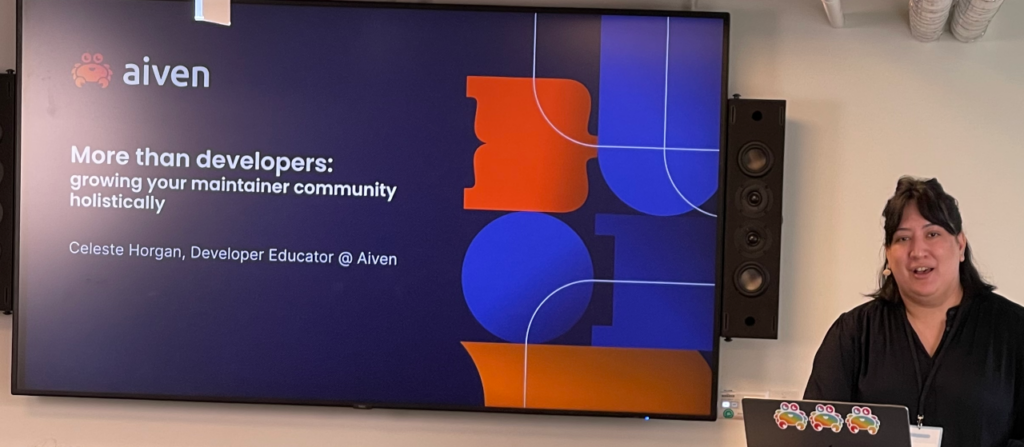
I then attended a talk by Celeste Horgan on growing a maintainer community (video). While I have written computer code I do not consider myself a developer, yet I felt that I was able to bring value to the open source project I worked on for decades. This session covered how to get non-coders to contribute and how to manage a project as it grows.
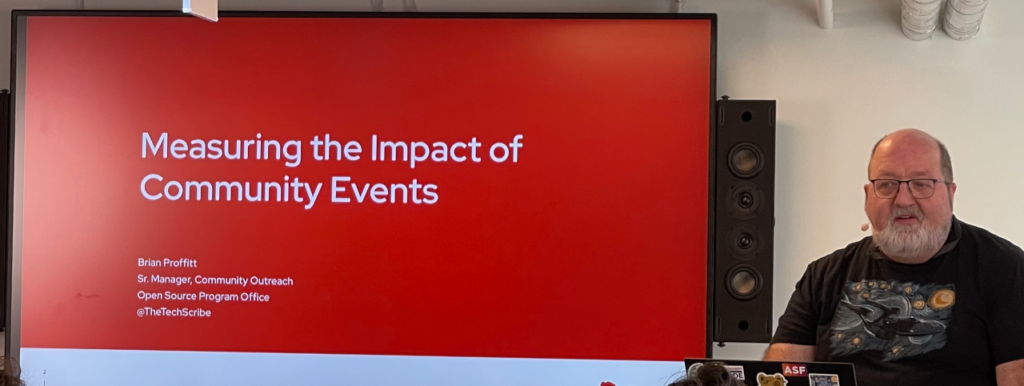
Brian Proffitt gave a talk that I found very interesting to my current role on the difficulties of measuring the return on investment (ROI) for being involved in open source events (video). While I almost always assume engagement with open source communities will generate positive value, how do you put a dollar figure on it? For example, event sponsorship usually gets you a booth space in whatever exhibit hall or expo the event is hosting. When I was at OpenNMS we would sometimes decline the booth because while we wanted to financially sponsor the conference, we couldn’t afford to do that and host a booth. There are a lot of tangible expenses associated with booth duty, such as swag and the travel expenses for the people working in it, as well as intangible expenses such as opportunity cost. For commercial enterprises attendance at an event can be measured in things like how many orders or leads were generated. That doesn’t usually happen at open source events. It turns out that it isn’t an easy question to answer but Brian had some suggestions.
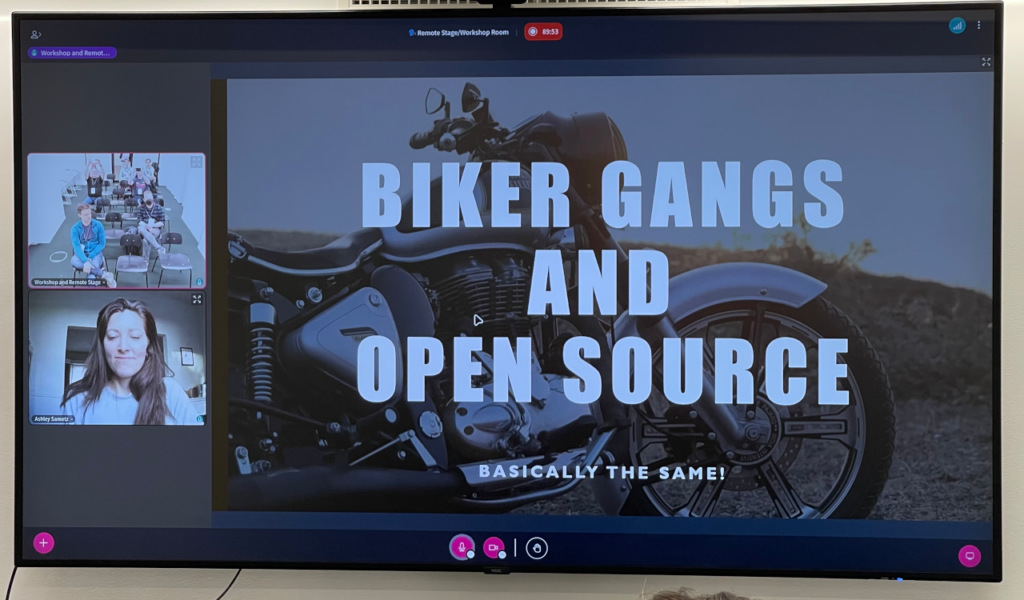
For most of the conference there were two “in person” tracks and one remote track. The only remote track I attended was a talk given by Ashley Sametz comparing outlaw biker gangs to open source communities. Ashley is amazing (she used to work on our team before pursuing a career in law enforcement) and I really enjoyed her talk. Both communities are tightly knit, have their own jargon and different ways of attracting people to the group.
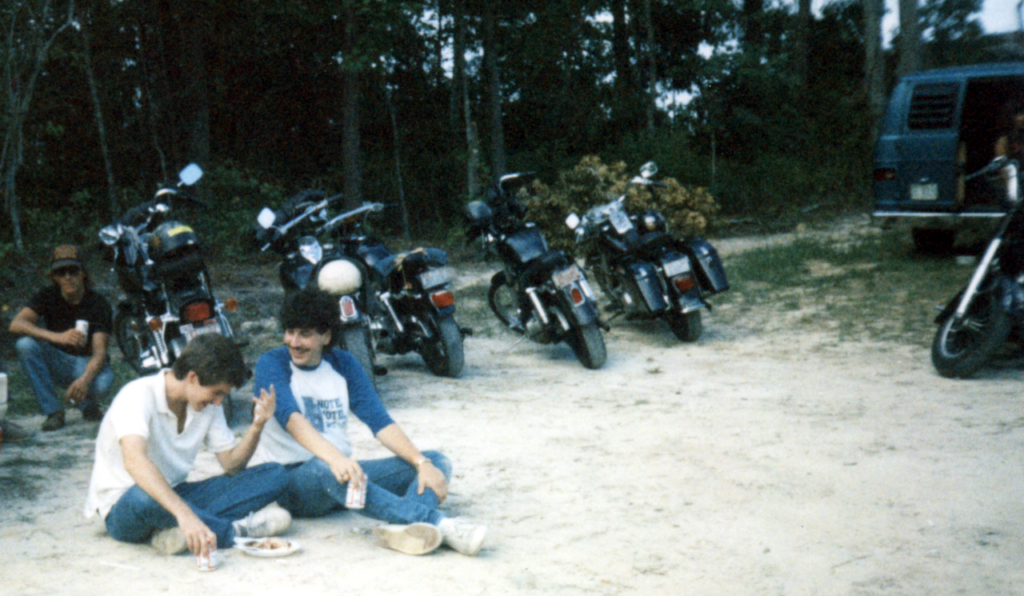
While I wouldn’t have called them part of an “outlaw motorcycle gang”, many years ago I got to meet a bunch of people in a motorcycle club. It was just before Daytona Bike Week and a lot of people were riding down to Florida. North Carolina is a good stopping point about midway into the trip. While it was explained to me and my friend David that “Mama is having a few folks over for a cookout, you two should come” we were a little surprised to find out that all those bikes we saw on the way there were also coming. There were at least 100 bikes, many cars, and one cab from a semi-tractor trailer. It was amazing. If you have ever seen the first part of the movie Mask that is just what it was like. And yes I could rock the John Oates perm back then.
That session ended up being the last session I attended that day. I spent the rest of the conference in the hallway track and got to meet a lot of really interesting people.
That evening I did manage to get Jägerschnitzel, which was on my list of things to do while in Germany. Missed the Döner kebab, however.
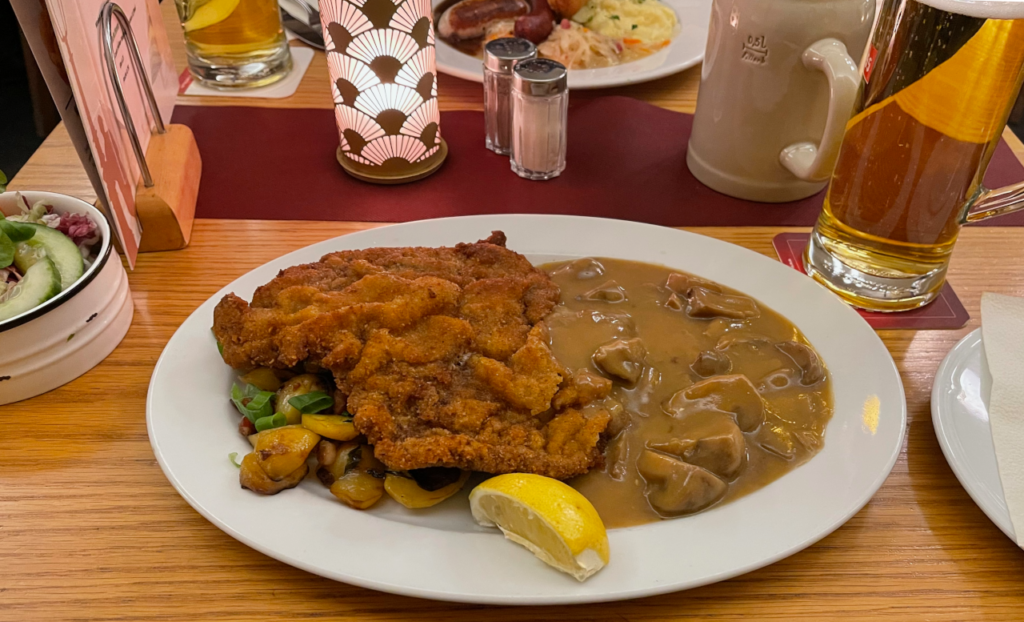
I found FOSS Backstage to be well worth attending. I wish I’d known about it earlier, so perhaps this post will get more people interested in attending next year. Open source is so much more than code and it was nice to see an event focused on the non-code aspects of it.